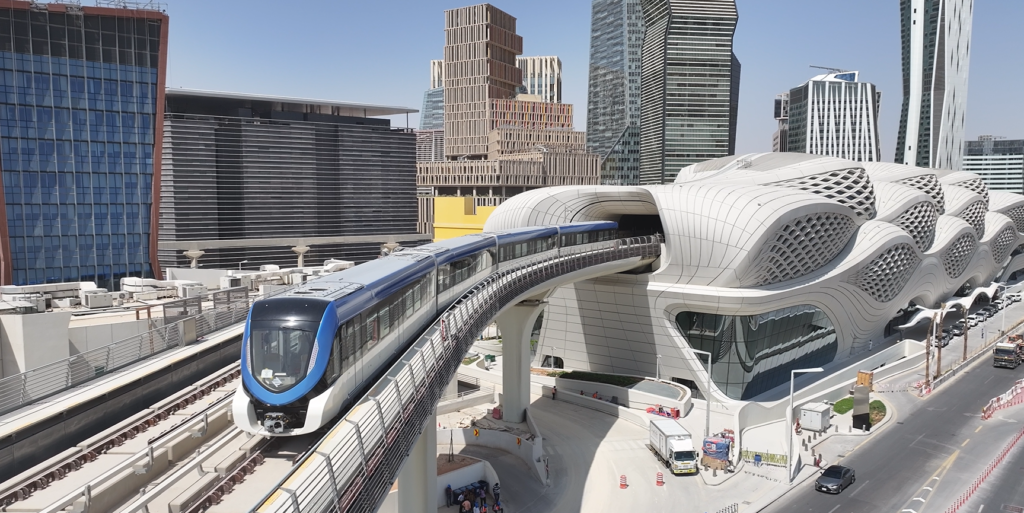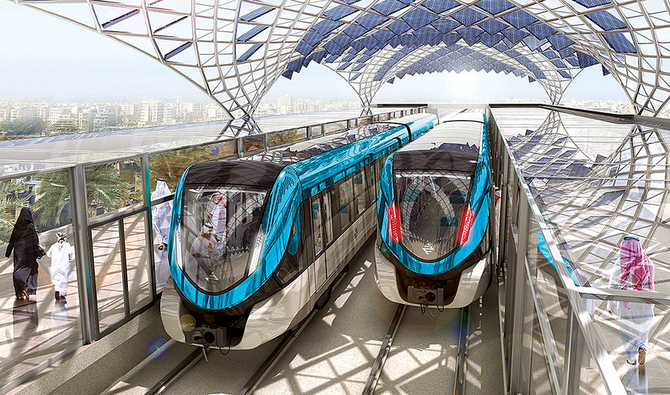Saudi Arabia metro and railway expansion is one of the most ambitious infrastructure projects in the Middle East. With billions of dollars invested in building modern metro lines, high-speed railways, and advanced transport hubs, the Kingdom is moving closer to its Vision 2030 goal of creating world-class urban mobility. These projects are not just about transportation; they are reshaping cities, boosting the economy, and improving the daily lives of millions of residents and visitors.
Why Transport Expansion Matters in Saudi Arabia
For decades, Saudi Arabia has relied heavily on private cars, taxis, and buses. As cities like Riyadh, Jeddah, and Makkah grew rapidly, traffic congestion and pollution became serious issues. The government recognized the need for a sustainable transport system that reduces dependence on cars and offers efficient alternatives for commuters.
Metro and railway projects now stand at the heart of Saudi Arabia’s transformation plans. By developing advanced networks, the Kingdom is making its cities more accessible, improving tourism experiences, and supporting future mega projects such as NEOM and The Line.
Riyadh Metro: A Landmark Project
The Riyadh Metro is the largest single-phase metro system under construction anywhere in the world. It consists of six lines stretching over 176 kilometers, covering 85 stations across the capital. Designed with advanced driverless trains and eco-friendly technologies, the metro promises to reduce car traffic and provide fast, reliable transport for millions of people.
Once fully operational, the Riyadh Metro is expected to serve around 3.6 million passengers daily. With dedicated routes connecting key business districts, government centers, and residential neighborhoods, it is being positioned as the backbone of Riyadh’s new urban lifestyle.
Key Features of Riyadh Metro
- Six color-coded lines for easy navigation.
- Driverless trains equipped with modern safety systems.
- Stations designed with futuristic architecture and smart ticketing.
- Integration with buses and other transport services.
This project is not only easing congestion but also creating thousands of jobs and opportunities for local businesses.
Makkah Metro and Pilgrimage Transport
Makkah receives millions of pilgrims every year for Hajj and Umrah. Managing transport for such massive gatherings has always been a challenge. To solve this, Saudi Arabia launched the Makkah Metro, also known as the Al Mashaaer Al Mugaddassah Metro, which operates mainly during the Hajj season.
The metro connects key holy sites, including Mina, Arafat, and Muzdalifah, reducing heavy bus traffic and making pilgrim journeys safer and faster. Authorities are now expanding the system further to handle more passengers and provide year-round services.
This transport investment is not only helping pilgrims but also reinforcing Saudi Arabia’s reputation as a world leader in organizing mega religious events.
Haramain High-Speed Railway
Another major milestone in Saudi Arabia’s metro and railway expansion is the Haramain High-Speed Railway. Covering 450 kilometers, it connects the holy cities of Makkah and Madinah via Jeddah and King Abdullah Economic City. With trains running at speeds of up to 300 km/h, travel between Makkah and Madinah has been reduced to under two and a half hours.
The high-speed rail is a game changer for both pilgrims and residents. It offers a comfortable, fast, and reliable alternative to road travel, helping to reduce traffic accidents and environmental impact.
Jeddah Metro and Urban Growth

Jeddah, the Kingdom’s second-largest city, is also set to benefit from a major metro system. The Jeddah Metro project will include three main lines covering more than 100 kilometers. The system is designed to support the city’s growing population and its role as a commercial hub.
The Jeddah Metro will also connect with the Haramain Railway, creating seamless travel between the city, Makkah, and Madinah. With the addition of bus rapid transit (BRT) and other smart mobility solutions, Jeddah is preparing for a future of reduced congestion and enhanced connectivity.
Economic and Social Benefits
Saudi Arabia’s investment in transport infrastructure goes beyond convenience. It is directly tied to the Kingdom’s Vision 2030 plan, which focuses on economic diversification and sustainability.
Some of the key benefits include:
- Job Creation: Thousands of employment opportunities for engineers, technicians, and service staff.
- Tourism Growth: Easier travel for millions of tourists and pilgrims.
- Reduced Pollution: Lower car dependency means cleaner air and healthier cities.
- Global Competitiveness: World-class infrastructure positions Saudi Arabia as a regional transport hub.
Integration with Mega Projects
The expansion of metro and railway networks is also aligned with futuristic mega projects such as NEOM and The Line. These developments aim to create car-free, smart cities that rely on advanced public transport systems. By building a strong foundation now, Saudi Arabia is ensuring that its future urban projects will have sustainable and connected mobility solutions.
Challenges and Future Plans
Despite rapid progress, there are challenges. Construction delays, high costs, and the need for skilled labor remain ongoing issues. However, the government has shown strong commitment by allocating huge budgets and bringing in international expertise to ensure timely delivery.
Looking ahead, Saudi Arabia plans to expand its railway network even further, with new lines connecting major cities and industrial zones. The long-term goal is to link the Kingdom with the wider Gulf railway system, creating a regional network that enhances trade, travel, and economic cooperation.
The Road Ahead
Saudi Arabia metro and railway expansion is more than an infrastructure upgrade; it is a symbol of transformation. As the projects move closer to completion, millions of residents and visitors will experience faster, cleaner, and smarter ways of traveling.
From Riyadh’s futuristic metro to the Haramain High-Speed Railway and the expanding networks in Jeddah and Makkah, the Kingdom is reshaping its mobility landscape. With Vision 2030 as the guiding force, Saudi Arabia is proving that modern transport systems are essential to building sustainable, competitive, and livable cities for the future.
Do Follow Gulf Magazine on Instagram
Also read: Sultan Haitham Leads Oman’s Grand Festival Celebrating 5 Years of Renaissance



